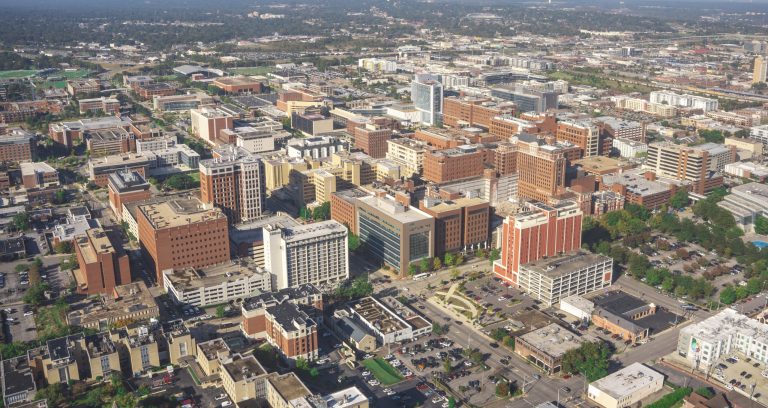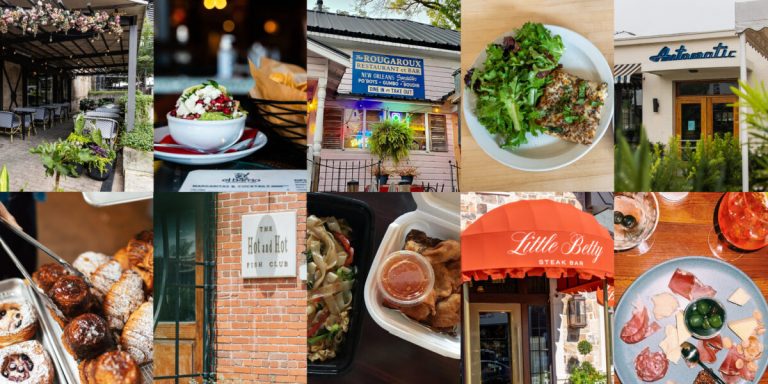Green Acres, Zion City, Apple Valley, Inglenook and Maple Grove – what they all have in common.
Reading time: 6 minutes
These are just a few of the neighborhoods that make up Birmingham’s list of 99. That’s right! Birmingham has 99 distinct neighborhoods in its city limits. If you live in the city of Birmingham, you’re already a member of one.
Green Acres is 1 of 99 Birmingham NeighborhoodsFollow our handy, dandy primer below to understand how they came about and what they do for you.
Where are you from anyway?
Chances are you’ve responded “Birmingham” when asked where you’re from while traveling. But as all of us locals know, “Birmingham” is a conglomeration of many distinct places, each with its own unique characteristics. Signage often helps us know when we’re crossing from one of the region’s many municipalities into the next, but when it comes to neighborhoods, the boundaries are harder to find.
Although a resident may be able to tell you which neighborhood they live in, it’s less likely that they can identify exactly where it begins and ends. Indeed, in many cities’ the neighborhoods don’t have political boundaries. In the City of Birmingham however, this is not the case – they do.
Church in Apple Valley BirminghamEvery square inch – whether residential, commercial, or industrial – can be identified as being in one of its 99 neighborhoods.
How were our Neighborhood boundaries formed?
The City of Birmingham created a Dept. of Community Development in 1972 to comply with requirements established by the U.S. Department of Housing and Urban Development (HUD) for its Community Development Block Grant program. Community Development worked with HUD during 1973 to design a means for the city to identify its neighborhoods and create representative organizations in each.
Using door-to-door polling to ask residents about how they perceived their neighborhood boundaries, a map dividing the city into individual neighborhoods was developed. Because of the city’s history, it’s no surprise that this approach resulted in boundaries that are in many instances clearly influenced by the legacy of racial segregation. Later expansion of the city through annexation increased the total number of neighborhoods to the present day 99.
The Citizen Participation Plan was born.
The program that ultimately developed out of this process is called the Citizen Participation Plan (CPP).
The CCP’s statement of intent explains that the program “is designed to achieve improved communication, understanding, and cooperation between Birmingham citizens and city officials through increased communication between City Hall, neighborhoods, and communities throughout the City.”
To accomplish this the plan established a three part organizational system based on geography, each of which has equal access to city officials relative to the areas that they represent. The CPP is enabled by the approval of the City Council, which makes these entities a legally recognized extension of the municipal governing system.
Next came the Neighborhood Associations.
The basic unit of the CPP is the Neighborhood Association (NA), one for each of the city’s 99 neighborhoods. All residents of a given neighborhood are automatically “members” of their respective NA. Although sometimes confused, Birmingham’s NAs are not homeowners associations. Unlike the typical HOA, there are no annual dues or any other form of obligation required.

What do Neighborhood Associations do?
The NA is essentially a geographically focused civic association that is recognized by city officials as the official representative body for neighborhood residents. NAs are also the hub for organizing community clean up, candidate forums, development planning, and other events and activities that make them an important asset for the city as a whole. The NAs have an elected President, Vice President and Secretary that serve two year terms. The last election was held this past October, 2016.
At the monthly meetings you can expect to have an opportunity to interact with representatives from Birmingham Police Department, Birmingham Fire and Rescue Services, Public Works, City Council, etc. The meetings are also a regular opportunity for neighbors to gather together to share concerns and ideas for helping one another and the community as a whole.
Residents who participate in their respective NA determine how to best utilize a small annual allocation of funds, the amount of which is determined by the Mayor and City Council in city’s budget. These funds are often used for neighborhood social events, holiday lighting, neighborhood officer training, gateway signage, and many other purposes as allowed by strict guidelines and regulated by the City Council and Legal Department.

What are Community Advisory Committees?
Neighborhoods are all grouped into one of 23 Communities. Communities include from two to six neighborhoods. The Communities are led by a Community Advisory Committee (CAC) which is made up of the elected officials from the Neighborhood Associations. For example, the Crestwood CAC is made up of the 3 officers from Crestwood North and 3 officers from Crestwood South – i.e. The Crestwood CAC has 6 members.
In January 2017, each CAC will convene to elect a president, VP, and secretary for the committee. The CAC president is usually referred to as the “community president”.
What is the Citizens Advisory Board?
Each Community has a seat on the 23 member Citizens Advisory Board (CAB). The community president is the default representative of the community on the CAB. The CAB has a purview that encompasses the entire city.
Also, NAs are the only unit that receives funding from the city. CACs and the CAB receive no funding.

Get Involved!
So, whether you are in Crestwood or Norwood, Pratt or Griselli, West Goldwire or Huffman, or any of Birmingham’s other neighborhoods, find out when and where your NA meets and get involved. You’ll more than likely find fellow neighbors who share your interests and concerns and are eager for your added energy and talent to be directed at doing small things that make a big difference.

How much are the elected leaders paid?
These leadership positions are all volunteer, meaning no pay.
How do I find out which Neighborhood Association I’m a member of?
You have two options:
- You can try the city’s GIS map at this link.
Hint: you’ll need to open the yellow ‘folder’ icon by Political Boundaries tab on the right side then and check Neighborhoods and Neighborhood Names then type your address in the box at the top of the map.
2. You can contact the Mayor’s Office of Community Resource Services on 205.297.8192
How do I find out when we meet?
Check our handy guide but we recommend contacting your Neighborhood President to confirm details.
Other resources:
Birmingham Neighborhoods on Bhamwiki
Want to run or vote for leadership in your neighborhood There are a few requirements.
Your Neighborhood Association might also have a Facebook page or use the nextdoor website for communication.
We hope you’ll get inspired to get involved! You’re already a member.



